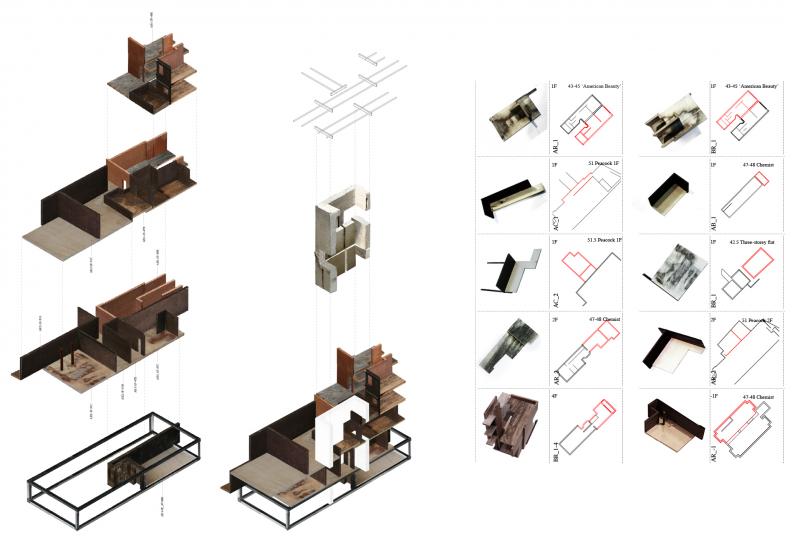
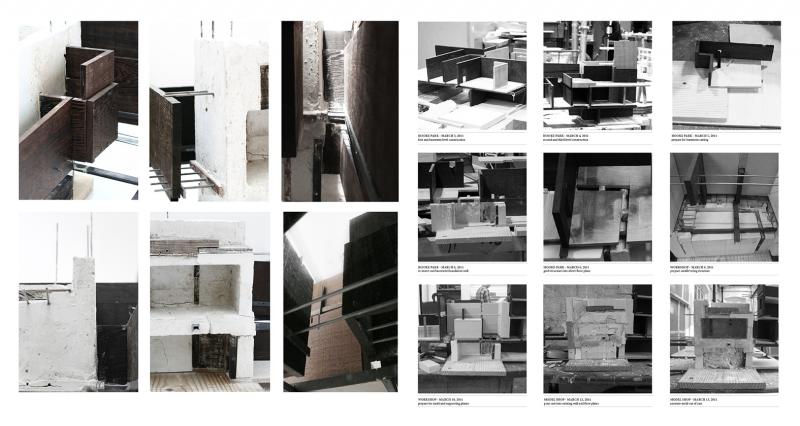
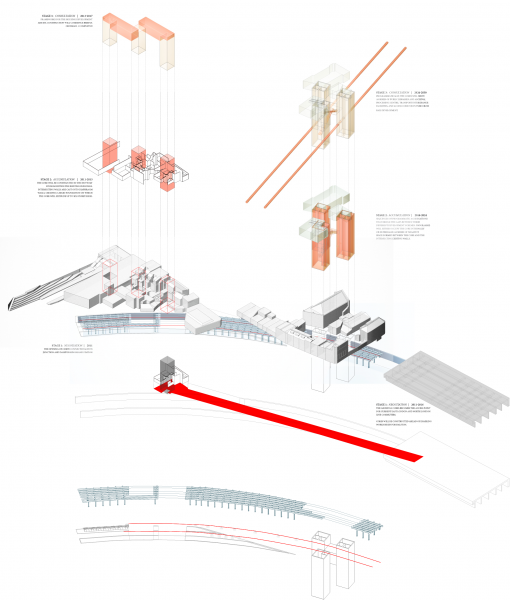
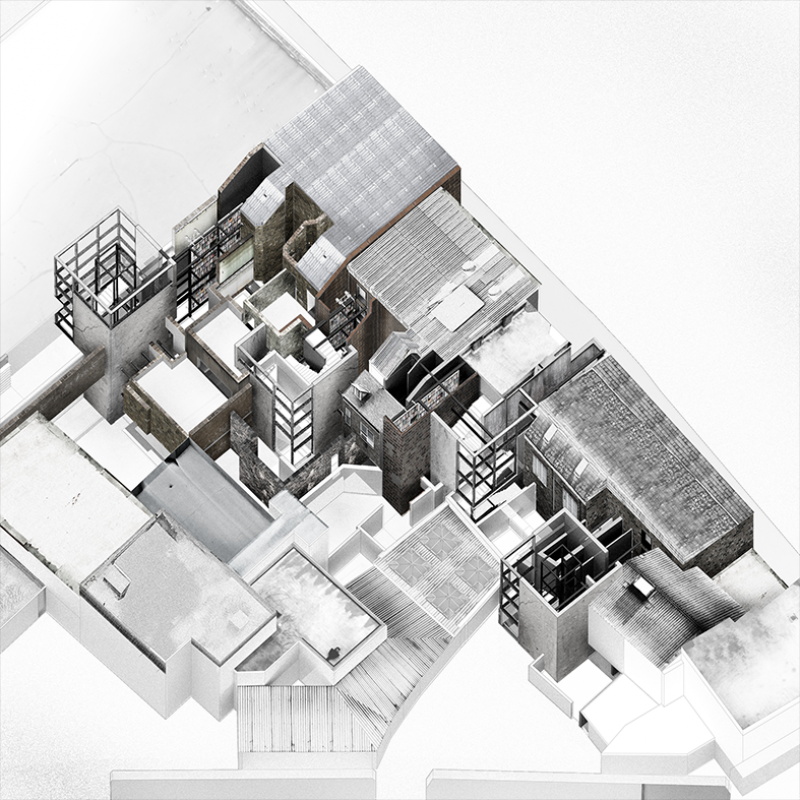
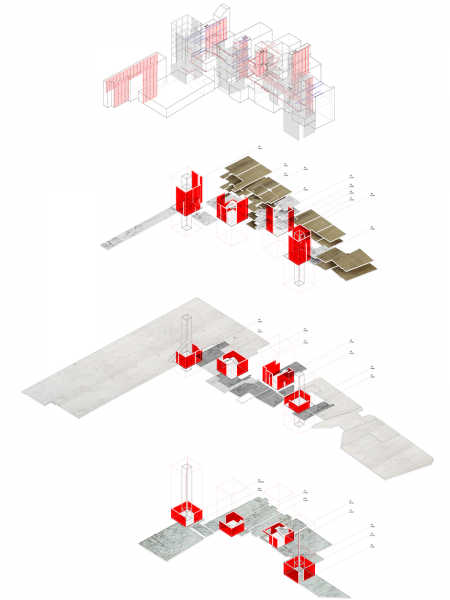
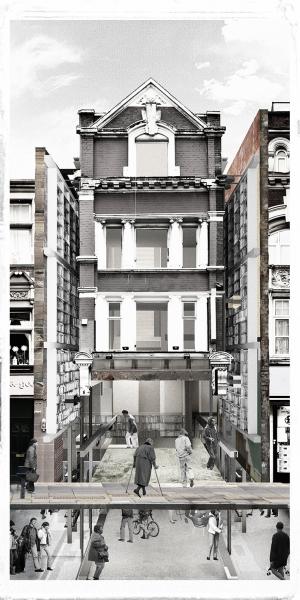
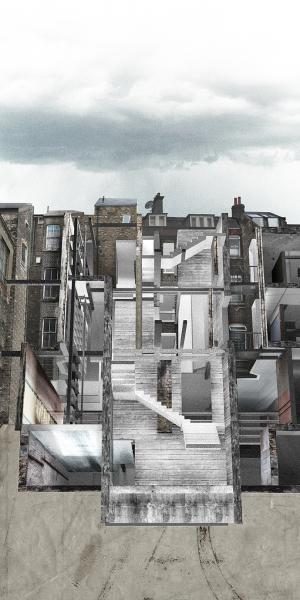
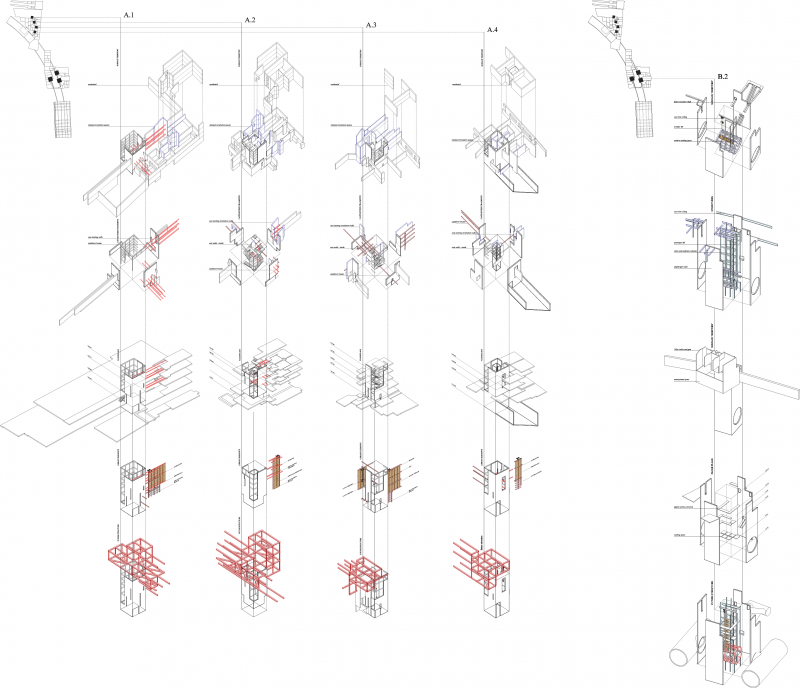
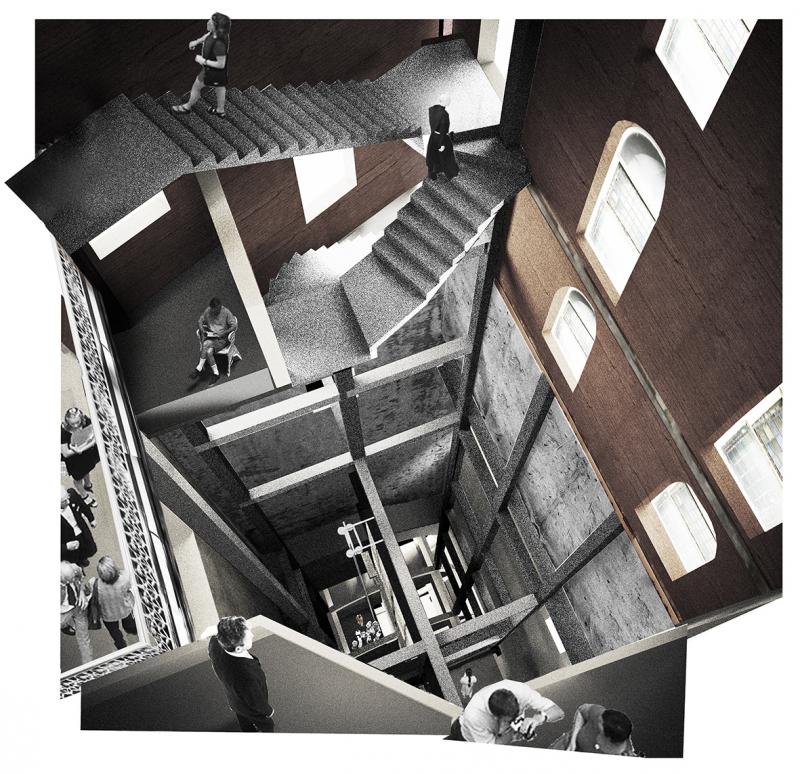
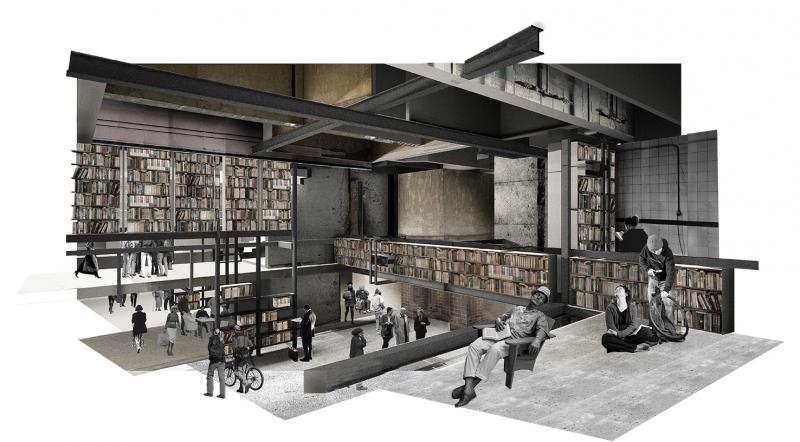
The project corresponds to the gaps and inconsistencies between layers of masterplans and commercial developments. Through the distribution of articulated structural follies, the site is subjected to programmatic accretion that consolidates fabric of the past and future into a vast infrastructural landscape. It aims to curate what the city provide us, within its shells and enclosures, a textural reminder that has eluded the ongoing pre-occupation of renewal through regeneration. A city is archived. Follies are weaved into trajectories of micro-libraries and transit arcades, composed in the state of ongoing transmutation that anticipates forthcoming residential and transport developments.